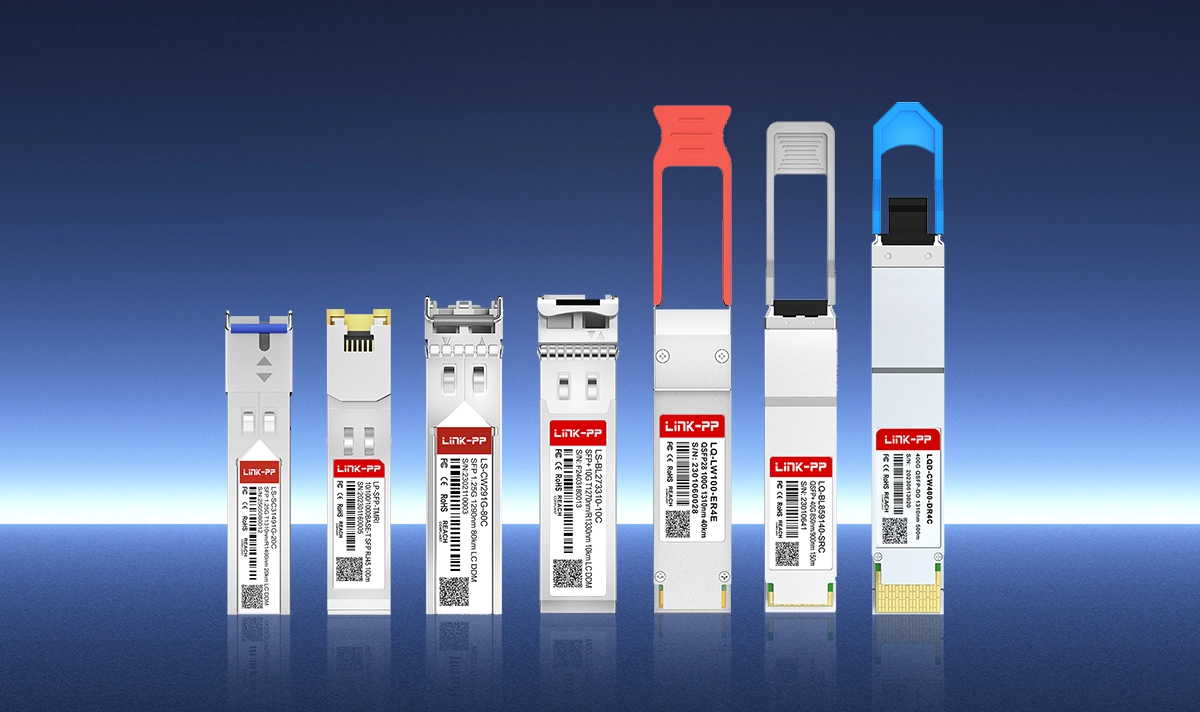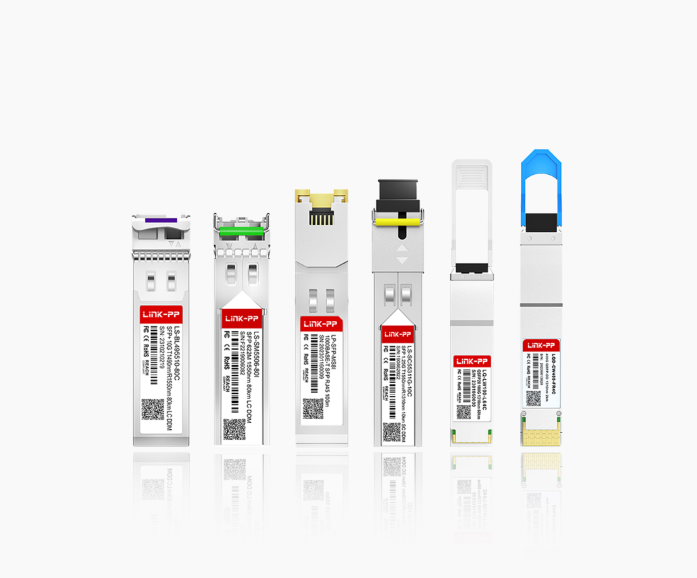
In today's fast-paced industrial and data-driven environments, achieving precise time synchronization is no longer a luxury—it's a necessity. As networks evolve to support real-time applications like autonomous systems, industrial automation, and financial trading, two protocols stand out: Time-Sensitive Networking (TSN) and Precision Time Protocol (PTP). While both aim to deliver accurate timing, they serve distinct roles in the ecosystem of synchronized communications. This blog post delves into the key differences, applications, and synergies between TSN and PTP, helping you make informed decisions for your network infrastructure. Plus, we'll explore how components like optical transceivers, including the LINK-PP model, play a crucial role in enabling these technologies. Whether you're an engineer, IT professional, or tech enthusiast, this guide will equip you with actionable insights.
📝 Key Takeaways
Time-Sensitive Networking (TSN) makes sure data gets sent on time. It puts important messages first. This helps in places like factories and cars.
Precision Time Protocol (PTP) matches the clocks on all devices. This means every device knows the same time. This is very important for things like music and video streaming.
TSN controls both timing and how data is sent. PTP only keeps the time the same on all devices. TSN works better for big and tricky networks.
If a network is big and needs good timing and safe data, TSN is best. TSN can handle lots of devices and keeps traffic in order.
Picking TSN or PTP depends on what you need. Use TSN if you need both timing and data control. Use PTP if you only need the clocks to match.
📝 What is Time-Sensitive Networking (TSN)?
Time-Sensitive Networking (TSN) is a set of IEEE standards (e.g., 802.1Qbv, 802.1AS) that enhance standard Ethernet to support deterministic, low-latency communication. Think of TSN as a "traffic manager" for data packets—it ensures time-critical data, such as control signals in industrial robots or audio-video streams, arrives on schedule, even in congested networks. TSN operates at the data link layer (Layer 2 of OSI model) and incorporates features like time-aware shapering, frame preemption, and reliability mechanisms. This makes it ideal for applications where delays could lead to failures, such as in automotive networks, smart grids, and Industry 4.0 setups.
Key aspects of TSN include:
Deterministic Latency: Guarantees data delivery within strict time bounds.
Interoperability: Works with existing Ethernet infrastructure.
Scalability: Supports everything from small IoT devices to large industrial systems.
For instance, in a factory automation scenario, TSN can synchronize multiple robots to perform coordinated tasks without jitter, improving efficiency and safety. According to industry reports, the adoption of TSN is rising due to its ability to merge operational technology (OT) and information technology (IT) networks, reducing costs and complexity.
📝 What is Precision Time Protocol (PTP)?
Precision Time Protocol (PTP), defined by IEEE 1588, is a protocol designed to synchronize clocks across a network with sub-microsecond accuracy. Unlike simpler protocols like NTP (Network Time Protocol), PTP uses hardware timestamping and a master-slave architecture to minimize timing errors. It operates across various layers but is often implemented in conjunction with Ethernet. PTP is widely used in fields requiring ultra-precise synchronization, such as telecommunications (e.g., 5G networks), financial services for timestamping transactions, and broadcast media for aligning video feeds.
Highlights of PTP:
High Precision: Achieves nanosecond-level accuracy in optimized setups.
Flexibility: Can be deployed over LANs, WANs, or even wireless networks.
Cost-Effectiveness: Reduces the need for dedicated timing hardware like GPS in many cases.
In a 5G base station, for example, PTP ensures that multiple antennas transmit signals in perfect sync, enabling seamless connectivity and low latency. As networks advance, PTP is becoming a cornerstone for time synchronization protocols in industrial Ethernet, helping organizations meet stringent regulatory requirements.
📝 TSN vs PTP: Key Differences and Applications
While TSN and PTP both address timing issues, they are not direct competitors—rather, they often complement each other. TSN focuses on managing network traffic for deterministic delivery, whereas PTP specializes in clock synchronization. Understanding their differences is crucial for selecting the right tool for your needs.
Below is a comparative table summarizing their core attributes:
Feature | ||
|---|---|---|
Primary Function | Deterministic data delivery and traffic shaping | High-precision clock synchronization |
IEEE Standard | 802.1 series (e.g., 802.1Qbv) | IEEE 1588 |
Layer of Operation | Data Link Layer (Layer 2) | Application/Transport Layers (Layers 4-7), with hardware support |
Typical Accuracy | Microseconds to milliseconds | Nanoseconds to microseconds |
Key Applications | Industrial automation, automotive, AVB (Audio Video Bridging) | Telecom (5G), finance, energy, broadcasting |
Integration with Ethernet | Built as an extension to Ethernet | Often used over Ethernet networks |
Complexity | Moderate to high, due to traffic management | Moderate, relies on network configuration |
When to Use Which?
Choose TSN if your priority is ensuring that critical data packets (e.g., in a robotic assembly line) arrive without delay, and you need to manage bandwidth dynamically. TSN is part of the broader TSN and PTP in industrial automation trend, enabling converged networks.
Opt for PTP when you require extreme clock accuracy across distributed devices, such as in a data center for timestamping financial trades or in a mobile network for coordinating cell sites.
In many advanced systems, TSN and PTP are integrated—for instance, TSN can use PTP as its timing foundation to achieve both synchronization and deterministic communication. This synergy is driving innovations in industrial Ethernet solutions, where reliability and precision are paramount.
📝 The Role of Optical Transceivers in TSN and PTP Networks

Optical transceivers are unsung heroes in high-performance networks, converting electrical signals to light for fast, reliable data transmission over fiber optics. In TSN and PTP implementations, they ensure low latency, high bandwidth, and minimal signal degradation, which are critical for maintaining timing accuracy. For example, in a PTP-enabled network, transceivers with precise timestamping capabilities reduce jitter, while in TSN setups, they support the high data rates needed for real-time traffic.
Key benefits of using quality optical transceivers:
Low Latency: Essential for meeting TSN's deterministic requirements and PTP's sync precision.
Scalability: Enable long-distance connections without loss of signal integrity.
Compatibility: Work seamlessly with switches and routers supporting TSN and PTP standards.
When selecting transceivers, consider factors like data rate, form factor, and compliance with industry norms. For instance, the LINK-PP SFP28 optical transceiver is an excellent choice for applications demanding high speed and reliability. This model supports data rates up to 25Gbps, features low power consumption, and is ideal for use in PTP synchronization in 5G networks and TSN-based industrial systems. By integrating the LINK-PP SFP28, businesses can enhance network performance, reduce errors, and future-proof their infrastructure. As a leader in optical technology, LINK-PP offers solutions that align with the growing demand for time-sensitive networking applications, ensuring robust connectivity in harsh environments.
📝 Conclusion: Making the Right Choice for Your Network
In the debate of TSN vs PTP, there's no one-size-fits-all answer. TSN excels in providing deterministic communication for time-critical data, while PTP delivers unparalleled clock synchronization. For many modern applications—from smart factories to telecommunications—combining both protocols offers the best of both worlds. By leveraging hardware like the LINK-PP 25G SFP28 transceiver, you can build a resilient, high-performance network that meets the demands of today's digital transformation.
As you plan your next project, remember that investing in the right technologies can save costs, improve efficiency, and drive innovation. Stay updated with the latest trends in TSN and PTP integration to keep your competitive edge.
📝 FAQ
What is the main difference between TSN and PTP?
TSN controls both data delivery and timing. PTP only matches device clocks. TSN uses PTP for time synchronization but adds features for reliable and fast data movement.
Can TSN work without PTP?
TSN often uses PTP for clock synchronization. Without PTP, TSN cannot keep all devices on the same schedule. PTP helps TSN deliver data at the right time.
Which is better for large networks?
TSN works better in large networks. It manages many devices and keeps data moving quickly. PTP can struggle with many devices because it only matches clocks.
Where do companies use TSN and PTP?
Companies use TSN in factories, cars, and power plants for real-time control. They use PTP in telecom, audio, and video systems where matching time is most important.
Does TSN replace PTP?
TSN does not replace PTP. TSN builds on PTP by adding traffic control and scheduling. PTP stays important for time synchronization in many networks.




